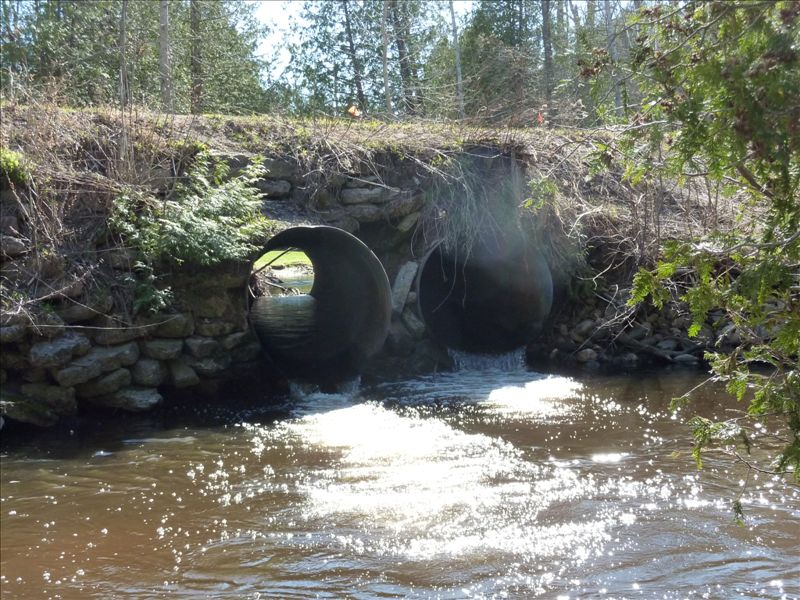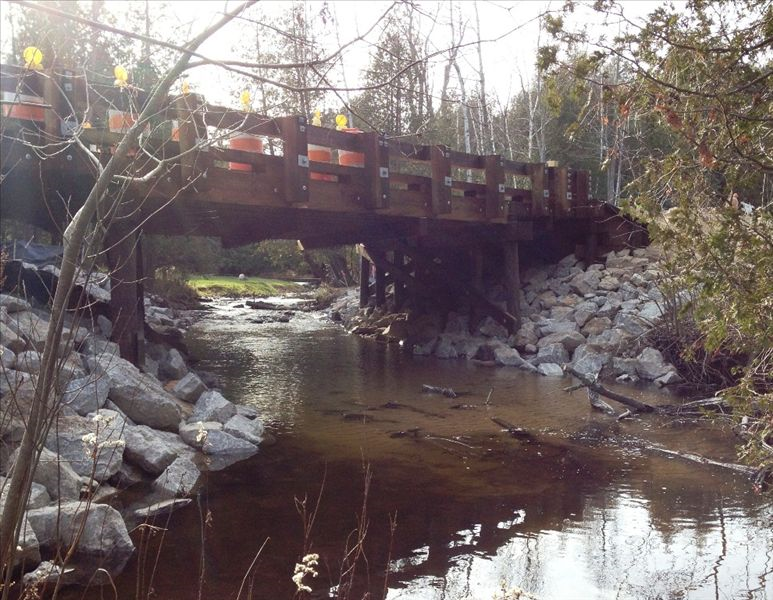Forest access roads and other roads in rural areas often cross streams and other small watercourses. Design and material used in forest road building may have strong impact on erosion risk and water quality in streams. The bridges or culverts used to cross these watercourses must be designed appropriately if negative impacts on the aquatic environment are to be minimized. Poorly designed or poorly implemented stream crossings can have numerous negative effects on the aquatic environment including increased sediment mobilization and changes in flow patterns. For example, flooding upstream of the road crossing can occur when the bridge or culvert is unable to transport a sufficient volume of water. Such floods can also wash out bridges or stream crossings, leading to increased costs for the road owner and downstream sediment pollution. Increased sediment mobilization results in loss of aquatic habitat and may extirpate threatened species including freshwater pearl mussel as well as destroying spawning habitat.
 |
 |
| River with inappropriate design |
River after designing a proper crossing Source: http://www.huronpines.org/projectinfo.asp?pjt=pv&pid=37 |
| Benefits | Level |
|---|---|
|
BP2 - Slow runoff
|
Medium
|
|
BP1 - Store runoff
|
Medium
|
|
BP3 - Store river water
|
Medium
|
|
BP4 - Slow river water
|
Medium
|
|
BP8 - Reduce pollutant sources
|
Medium
|
|
BP10 - Reduce erosion and/or sediment delivery
|
High
|
|
BP12 - Create aquatic habitat
|
High
|
|
ES1 - Water storage
|
Low
|
|
ES2 - Fish stocks and recruiting
|
High
|
|
ES4 - Biodiversity preservation
|
High
|
|
ES7 - Flood risk reduction
|
Low
|
|
ES8 - Erosion/sediment control
|
High
|
|
ES9 - Filtration of pollutants
|
Low
|
|
ES11 - Aesthetic/cultural value
|
Medium
|
|
ES12 - Navigation
|
Low
|
|
PO1 - Improving status of biology quality elements
|
Medium
|
|
PO2 - Improving status of physico-chemical quality elements
|
Low
|
|
PO3 - Improving status of hydromorphology quality elements
|
Medium
|
|
PO7 - Prevent surface water status deterioration
|
High
|
|
PO9 - Take adequate and co-ordinated measures to reduce flood risks
|
Medium
|
|
PO10 - Protection of important habitats
|
Medium
|
|
PO11 - Better protection for ecosystems and more use of Green Infrastructure
|
Low
|
|
PO12 - More sustainable agriculture and forestry
|
Low
|
|
PO13 - Better management of fish stocks
|
Medium
|
|
PO14 - Prevention of biodiversity loss
|
Medium
|
